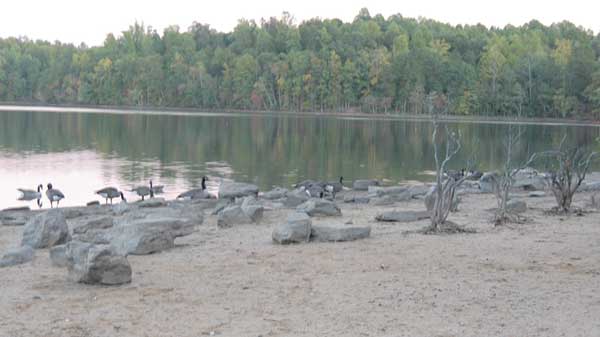
This year has been one of the driest on record in South Carolina and across much of the Southeast, but if you’re a fisherman, you can find a silver lining in that dark cloud.
The water levels in most of our lakes have been so low that a lot of the great, shallow cover that we fish in the spring is high and dry, available for anyone to see.
Most of us fish in the spring, and when we have good days, the lakes are usually at full pool or close, and the cover and structure that holds fish is anywhere out to 10 feet deep.
If you’re trying to learn where that structure and cover is, it takes an awful lot of time just using your depthfinder, learning by trial-and-error, or squeezing that information out of your fishing buddies.
Or, you can wait for a pretty day this month, get out on the water and take note of the kinds of things you can see. It’s a great time to find a lot of brushpiles, stumps, humps, rocks, and even creek channels. Take your time and take it easy, because you don’t want to run around and run up on something you didn’t know was there.
I look for a number of different things when I’m surveying a lake during times of low water. One thing I really like to do is find the creek channels, not the big ones, not the river channel, but the smaller feeder channels, those ditches that may not be marked on your map.
Using your GPS, you can mark a trail where the creek channel is. Then, when you come back in the spring, when fish are using those creek channels to stage in the prespawn, you know exactly where they will be. You can mark it on a map, but it’s a whole lot easier to do with a GPS unit.
I really think that learning where channels are comes in handy when you’re trying to pattern fish in the spring. It’s easier to do when you know that you’re catching fish on an inside bend or an outside bend, and when you can mark an underwater stump that’s right on the channel, that’s absolutely a place you want to fish in the spring.
Visible cover is the majority of what you’re looking for. You can find brushpiles around docks — they’ll be visible with the water low. It’s especially good to find brushpiles that don’t get fished as much, like the ones that are about a half-cast away from docks — where the people who own the docks have sunk them for crappie.
You’re looking for stumps; you’re looking for rocks. Sometimes, you can mark high spots and ditches you didn’t know where there, structure off the bank that will hold fish. You can mark everything on a map or on your GPS.
You can look for things as deep as 10 to 12 feet, especially if the water levels on your favorite lakes have fallen five to six below full pool. Most people have an area they like to fish; a period of extended drawdown can be a time when they can thoroughly cover that area, to learn it even better than before.
I know that for a fact. I lived on Lake Murray for most of my life, but I’d go out in the winter and find things I’d never known were there — brushpiles and stumps and rocks — stuff like that. It’s probably more important in finding brushpiles, because people are putting them out all the time. There may be a brushpile that’s been put out by somebody since the last time the lake was down and you surveyed it.
I’ve fished places and caught fish on them and never known that a brushpile was close by until the water dropped.
One thing you can do to help make these December days enjoyable as well as profitable is to pick your day. There’s no need to get out there when it’s cold and rainy. Wait for a clear, warm day. You’re scouting for things that pay off in the future, but you might as well get some immediate enjoyment from being out on the lake.




Be the first to comment